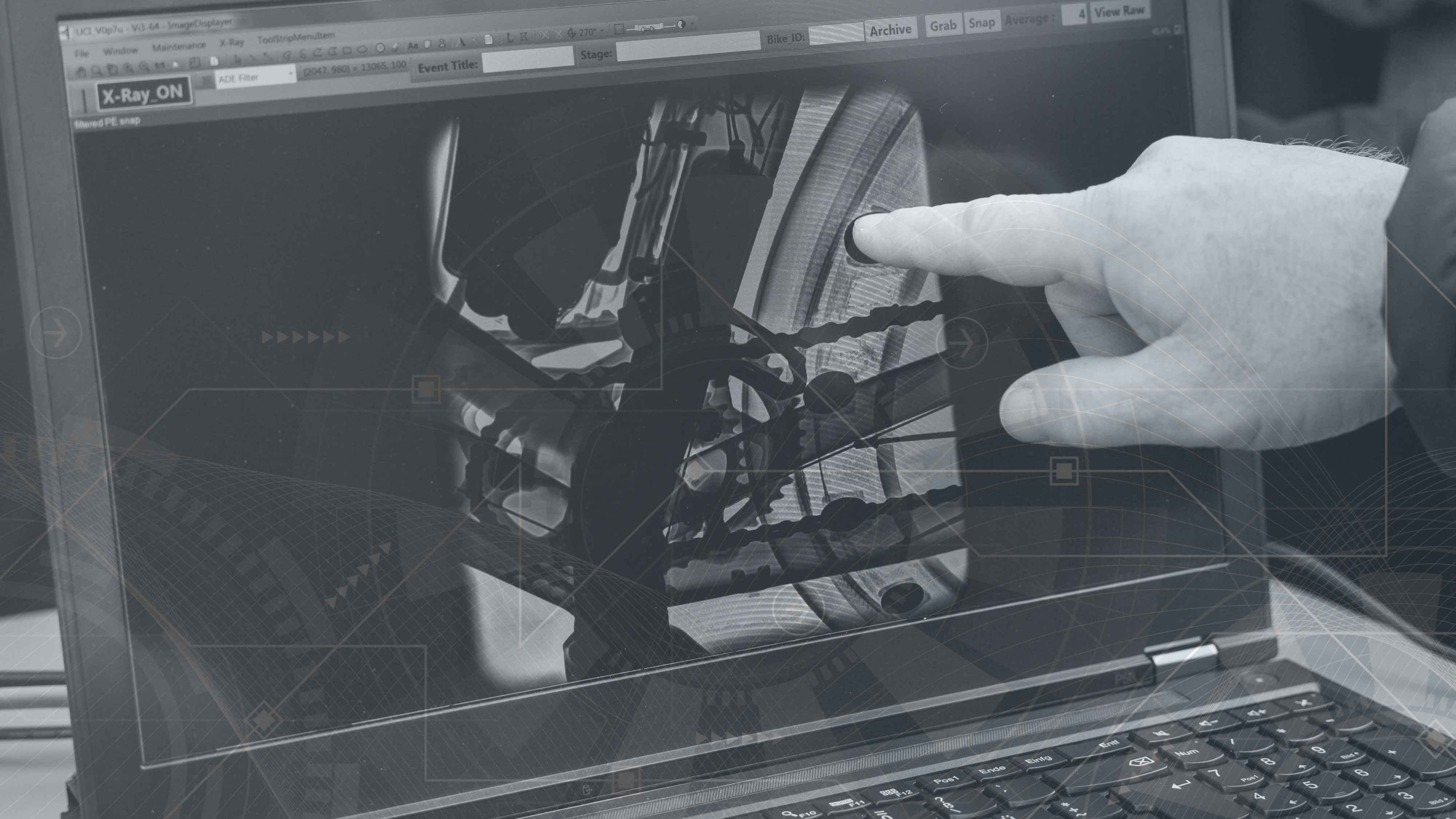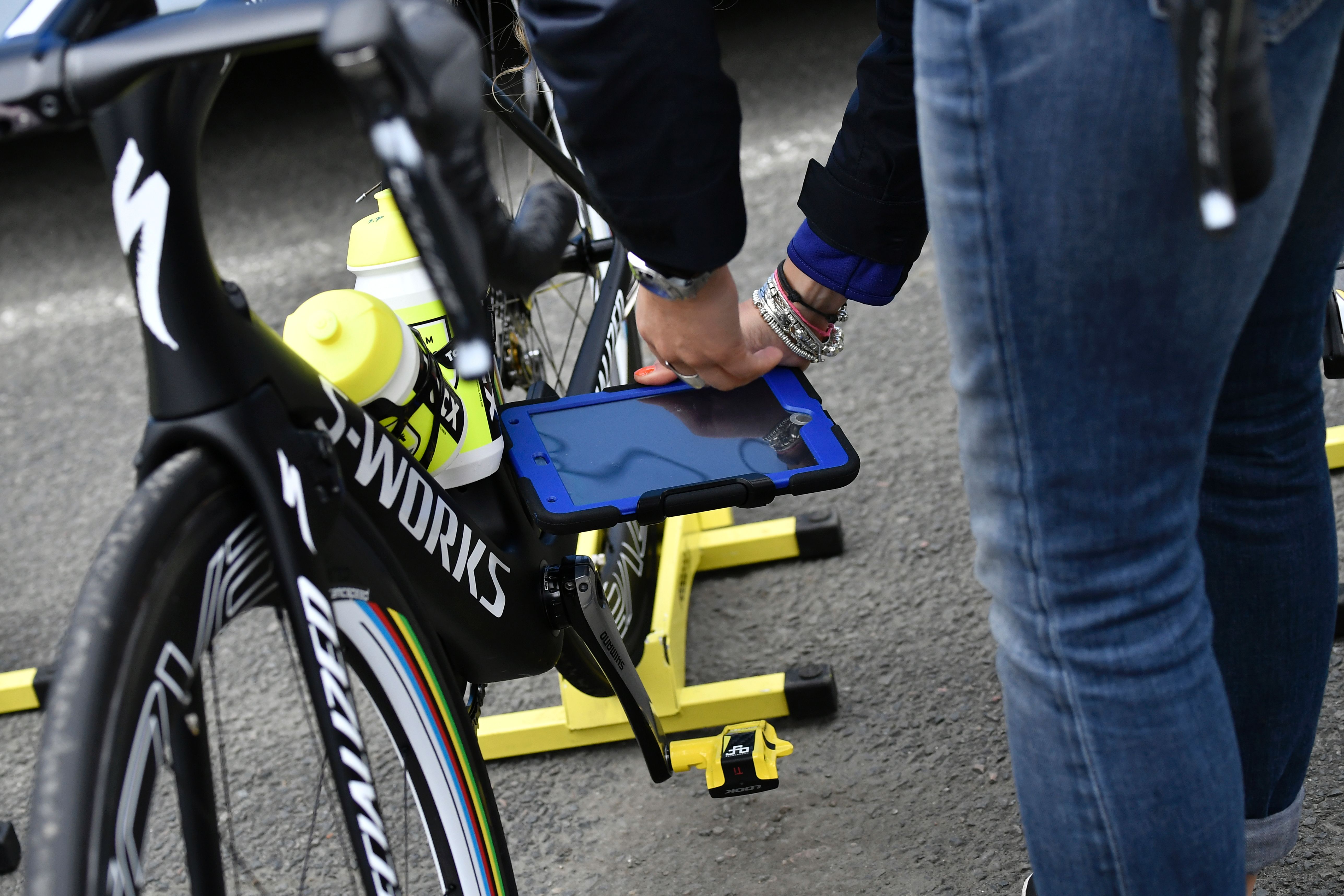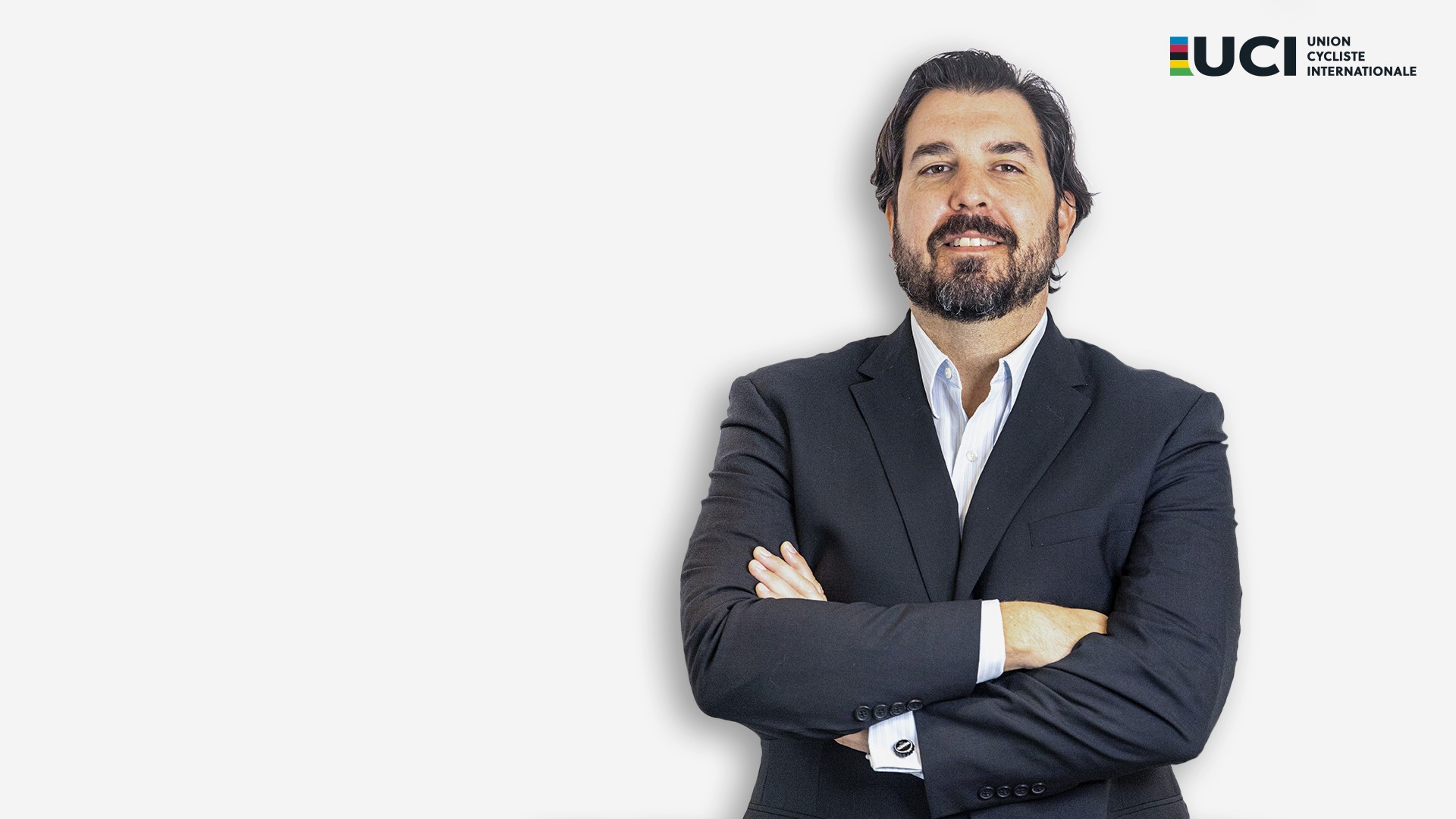A €600K X-ray, an ex-Homeland Security investigator, and a murky underworld: Can the UCI keep motor dopers away?
Having recently examined the current state of technological fraud in the pro peloton, Cyclingnews asks how the UCI plans to keep concealed motors out of cycling.

At the recent WorldTour seminar in Nice, cycling’s biggest stakeholders sat through a presentation on the ongoing threat of technological fraud. At one point, the former Homeland criminal investigator Nick Raudenski turned to a screen where a carefully curated video depicted how the UCI is tackling the risk of concealed motors in bikes.
UCI technicians were shown inserting a camera inside the frame of Jonas Vingegaard’s Cervélo at the Tour de France; Lotto Dstny’s Victor Campenaerts was shown watching an inspection of his own bike; and then Raudenski delivered a line that was intended to remind those watching that though not one single rider has been found with a hidden motor in their bike at a professional race since 2016, the danger remains as real as ever.
"We’ve come across a lot of allegations, a lot of beliefs, a lot of suspicions, and a lot of suspicious performances," said Raudenski, who has headed up the UCI’s fight against technological fraud team since May. "I don’t think anything is impossible. I think we always have to be awake to what potentially could happen."
Raudenski’s speech, sources present at the seminar told Cyclingnews, was met largely with a shrug of the shoulders. While there is widespread acceptance that motors were present in the peloton in the early 2010s, there have been few rumours or allegations about the practice since the Belgian cyclocross rider Femke van den Driessche was caught in 2016, and there is therefore deep scepticism that motor doping may be happening today.
Sign up to the Musette - our subscriber-only newsletter
But the UCI are insistent that they must continue to pour resources into combatting the possibility of sophisticated hidden technology in bikes. Because if they don’t, according to the UCI’s president, David Lappartient, someone will definitely cheat. "I believe that if we do nothing, this will happen," the Frenchman told the Ghost in the Machine podcast in the summer.
"We can’t be an organisation that says: ‘ok, this doesn’t exist and we won’t spend a lot of energy on this’. I believe with new technologies, with engines becoming smaller and smaller [and] maybe less easy to detect, we have to invest more in the technology and also in investigations.

Staying one step ahead
The UCI first developed a specific test for concealed motors in early 2016: a magnetic scanner attached to an iPad. On its very first outing, it located the Vivax Assist motor hidden in Van den Driessche’s spare cyclocross bike. Nearly a decade on, the scanner remains the UCI’s most-used prevention method, with around 30-40 bikes tested every day at WorldTour, World Championships and Olympic races.
Despite its speediness and omnipresence around team paddocks, the tablet has regularly been accused of not being able to detect all types of motors, or distinguish between a concealed motor designed to propel the drivetrain and a battery for electronic shifting. Even Lappartient himself expressed concerns about the magnetic scanner to the Ghost in the Machine podcast. "You can cheat even with a tablet," he said. "I don’t trust that the tablets are strong enough to fight against technological fraud. It’s better than nothing, but it’s not consistent enough."
The UCI also has a €600,000 x-ray machine which typically tests around eight bikes per day at the biggest races, including the stage winner and race leader, as well as a €45,000 handheld backscatter device which can deliver x-ray and density images. If anything that appears untoward is undiscovered, then the bike can be dismantled and inspected. The governing body has previously trialled but dismissed thermal imaging cameras.
As part of Raudenski’s remit, he has been tasked with researching new potential detection methods to go alongside the current trio of systems. "We have to stay in advance of how much is being developed, and so we have to make sure that we’re keeping pace with that innovation," the American added in the video shown at the seminar.
Cyclingnews understands that private enterprises unaffiliated with the UCI are also working on new detection methods, with the issue having made it to the attention of senior European politicians. Using power and cadence data to produce a ‘power passport’ similar to the Athlete Biological Passport has previously been mooted by some, as well as embracing artificial intelligence. "We have to investigate in which way AI can help us," Lappartient said in the summer.
Electromagnetism and 'special wheels'
A motor inside a professional’s bike today wouldn’t be anything like those inside commercially available e-bikes: they’d be much smaller and nimble, capable of producing between 20 and 50 watts, enough power to produce a race-winning attack, but not so extravagant to immediately arouse suspicion.
The big question everyone has is how even tiny motors and batteries could be concealed inside a bike’s frame, a rear hub or inside the wheels and still evade detection, especially an X-ray scan. Could they be camouflaged inside the Shimano Di2 batteries, for instance? "If you’re using a good quality battery that can reach 30 to 35 watts, you can hide it," Stefano Varjas, the most notorious and controversial producer of concealed motors, told Cyclingnews recently. "But you can’t hide the engine: you need manual contact on the drivetrain somewhere."

The Hungarian, who once said that he received $2m from an unnamed leading Tour de France team in 1998 for exclusive rights to his motors, added that "with money anything is possible – the only limit is budget." Though most have dismissed his boasts as fantasy and self-publication, Varjas has famously claimed to produce electromagnetic wheels that cannot be detected with any scanner; he says the permanent magnets hidden around the wheel are only detectable when in use. "Once the wheel stops, there is no proof," he said. "A hub system isn’t difficult to detect, but an electromagnetic wheel is much more difficult." He has previously said that such an innovation, if even possible, is "considered as a real tool for enhancing the power of a racer."
Whether or not ‘special wheels’, as they have been dubbed, exist, there is concern at the UCI that wireless groupsets are vulnerable to being hacked, as was proven in the summer. The fear is that if gears can be altered remotely, small motors can also be activated externally. This would tie into the school of thought some have that, as outlandish as it seems, a rider wouldn’t even need to know that their bike was mechanically assisted.
Motor doping's underworld
A decade ago, just before the e-bike market boomed into a $50 billion business, there were a number of hidden motor producers across Europe, each subtly squeezing motors and batteries into road bikes for higher-end clients with a lot of disposable income.
Today, however, with the exception of Varjas and his E-powers brand, those same producers are no longer part of the electrical bike business – whether formally or informally. Vivax Assist, the company that made the type of motor that Van den Driessche had in her bike, closed down in 2020, and operations in Italy and Monaco have also closed. The rapid expansion of e-bikes has rendered their crafty and expensive work more or less redundant; rich clientele no longer need to fork out thousands on a modified bike with technological assistance when they could walk to their local bike shop and pick up a sophisticated and sleek design for much less.
That’s not to say, though, that there’s no one left in this niche space. "There are a lot, not one, two or five, more like 20," Varjas told Cyclingnews when asked how many competitors he has. "The world is very huge, and I think there are a lot of other producers," he told the Ghost in the Machine podcast earlier in the year. "If they have their own clients and if they want to hide, they don’t need advertising."
The common perception among those in the know is that while Varjas was probably at the cutting edge of this innovation a few decades ago, he no longer is. Identifying those who may now be the kingpins of the concealed motors business is a big part of Raudenski’s job. "I think the technology is out there," Raudenski said. "I think it exists, and I think if there is enough money to throw at a problem or at a situation then there is enough money to provide a solution that will likely not be so easy to detect."
Is the UCI chasing a red herring?
Snooping out the cheaters and the people behind them is very slow and drawn-out. It’s the same as trying to uncover proof of doping or a sportsperson match-fixing: they’re typically several steps ahead of comparatively underfunded governing bodies and institutions working to catch them.
It’s entirely plausible – and most in the sport think this is the case – that Raudenski and the UCI are chasing a red herring; the motor threat, largely because of the trio of prevention methods in place that act as a deterrent, has ceased to exist. But so grave is the possibility of someone committing technological fraud – Lappartient has said it would "destroy the sport" – that the UCI insists that maximum surveillance is required, hence the appointment of Raudenski.

"It’s why someone of my profile was brought in, that focus on intelligence and investigations," Raudenski said, a nod to the rewards scheme the UCI launched in September, designed to incentivise people with critical information to come forward. "Developing sources, finding new analytic means… working with people in the field, and also conducting those investigations robustly and swiftly. We’re not going to be testing everybody, but be much more focused and [test] based on specific information."
That last line is key. In 2023, an investigation by the RadioCycling podcast found that no bikes were tested for technological fraud in two of the three Giro d’Italia time trials, while neither the magnetic scanners nor X-ray machines were in use at several WorldTour races. Figures markedly improved in 2024, but the UCI admits that there are still flaws in its system, and fears that riders’ bikes can still avoid detection.
"I want to be sure that the bike that will be tested at the end is the bike that has been used," Lappartient said. "And it seems to be that the process is not 100% completely secure. When somebody wants to cheat they will always try to find the small details [like] where they can do this."
Bike changes, which have become increasingly more frequent since the universal adoption of disc brakes made wheel changes slower and more complicated, are highlighted by Lappartient. "I saw some videos on social media and sometimes you don’t know why at 10k to go they change their bike," he said. "Maybe there are some real reasons, but how can we be sure that they [UCI officials] will check the bike on the roof of the car and they will not change it or remove the bike? In addition to this, how can we ensure that some bikes and equipment that were not checked before [the race] can’t be used? All these kinds of things have to be secure, very high-level processes, and at the date of today I do not believe it is completely 100% secure."
Raudenski sides with his boss when it comes to maintaining a stance of perpetual vigilance. "If people are crazy enough to try it, and if we’re not there watching, not trying to deter and detect, then they are going to try it, and then the sport becomes a farce and you watch them riding up with motorbikes," he said. "There are two aspects: the deterrent aspect and the enforcement aspect when it happens."
As the 10th anniversary of Van den Driessche’s sanction approaches, success for the UCI today is deterring would-be motor dopers and strengthening what they admit is currently a fallible prevention system, rather than solely busting the cheats. "What we want to do is not to find some cheater but to ensure that nobody will cheat," Lappartient said. Van den Driessche might very possibly remain the only ever convicted motor doper.
If you subscribe to Cyclingnews, you should sign up for our new subscriber-only newsletter. From exclusive interviews and tech galleries to race analysis and in-depth features, the Musette means you'll never miss out on member-exclusive content. Sign up now